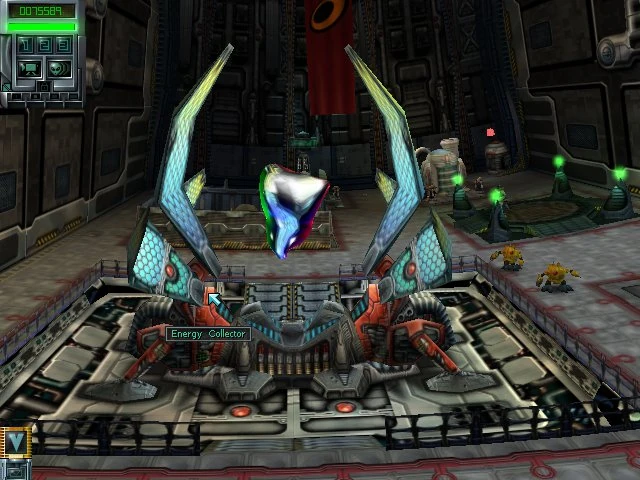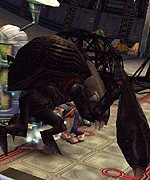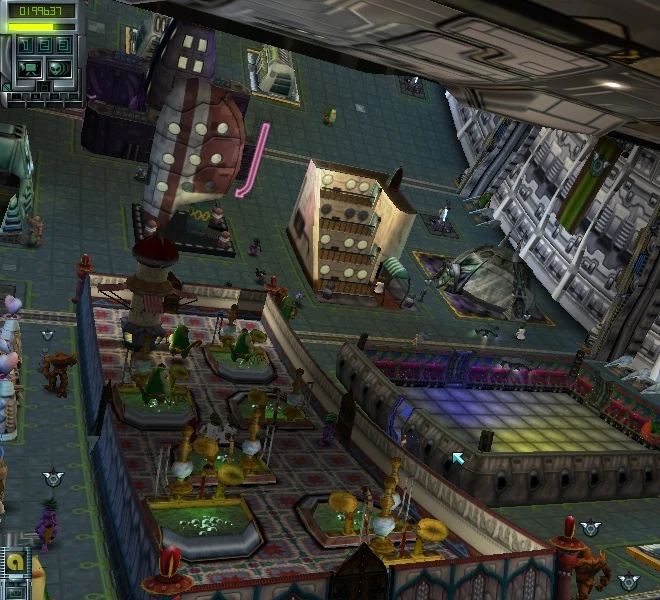Now city builders for me I have to really be in the mood for but SimCity 4 was always a favourite after getting bitten by the SimCity bug with my first ever PC. It had a pile of games come with the mountain of useless software they always used to bundle in with store bought, prebuilt rigs. Although the only two I really remember were SimCity 2000 and Alpha Centauri and I played them pretty extensively but the PC had been bought 'for homework' this was when I was mainly a gamer on the venerable PSX (Playstation one) but anyway! What I was trying to say before I swerved down memory lane was that this wasn't my first SimCity game, just my favourite.
In SimCity 4 like most other games in the franchise you are plonked unceremoniously into an empty looking patch of verdant green countryside and tasked with turning it into a concrete urban paradise. Usually easier said than done as keeping the sims happy enough to want to move in was tricky. With SimCity 4 however you could actually develop interconnected cities via the region view which in my opinion added an extra layer of depth and consideration to the gameplay formula and could remove some of the space issues from single self contained cities. The region you see below was the default region, containing all the tutorials but there were other regions you could load up, download or even create your own if you wanted, though I think I enjoyed the default region because of variety of landscapes it offered.
 |
| The region view, the first thing most people will see! |
Once you actually get into the game properly you'll find your omnipresent gaze looking down at a patch of usually green countryside. Normally you'd tend to jump right in but in my case I'd always play around with the terrain tools (which was expensive once you had actually started your city.) Depending what I wanted to do I'd either flatten it all out so I had more room or create some interesting hills and valleys if I wanted to play around with bridges, tunnels, ferries etc and just wanted it to look a bit more interesting than a big homogeneous square of concrete blocks. Throwing down a few thousand trees didn't hurt dealing with pollution either even if most of them got flattened from the initial rush of laying down roads. You could also throw in a variety of wildlife if you wanted though once the city was started I never used to see them, a shame, having your police needing to deal with bears rummaging through the bins could have been amusing.
 |
| In the beginning! (Do the tutorials!) |
Most of the building work is done automatically by any Sims that decide they want to move to your city. You would simply set down the zones according to the three main types (residential, commercial and industrial) and selected from various densities of such. As Sims moved in they build houses, shops and factories according to all kinds of factors, like water, power and more. Their education level also played a part, highly educated sims wanted high tech jobs, whereas Sims with low education were quite happy in farms and heavily polluting factories. The only real way you could directly influence things was taxing the various levels of businesses, increasing it for things you didn't want and decreasing it for things you did. It took me longer than I'd like to admit to get the hang of it so that my Sims were living in a gleaming modern metropolis rather than a dystopian smog-choked slum.
So aside from laying down roads and designating 'zoning' areas you also had to provide various utilities and amenities for Sims. Everything from clinics and police stations to universities, parks and power stations. Keeping your Sims happy whilst trying to make enough money to keep growing was the key challenge in SimCity 4 and I'll admit I catastrophically failed many many times before I even started to see my Sims building anything close to a skyscraper. Water was always the one I had trouble with though, always struggling to get the balance of pumps and treatment plants right so that everyone had clean water without me killing the budget. Though as with most things you could make use of the region layer and dedicate one or two 'cities' to exporting water to other places, much as you could do with electricity as well as many other things.
The budget was always the trickiest thing to get a handle on initially though at various points and milestones you could get special buildings to help out in various ways. From simple things like a farmers market to special deals to help you balance the books at a downside. The most memorable of those for me is of course was the missile range, provided a fairly hefty amount of income at the cost of, well what goes up must come down so your Sims didn't often approve of being the target of a missile strike. Who knew.
 |
| That urban sprawl! |
There were also more involved aspects along the way such as deploying firetrucks or police to help deal with various disasters that occasionally popped up. Also you could even drive various vehicles around your city in a little mini-game added with the Rush Hour expansion to break up the placid pace of mayoral life or even just get a little extra cash or mayor rating for the trouble.
 |
| Traffic problems getting you down, the autosaurus will stomp them flat! (Along with everything else..) |
Of course when the building was done and you grew tired or urban paradise or perhaps you just find your Sims still being obnoxiously demanding you could always do some 'creative remodelling' by unleashing various disasters. From the more typical offerings of earthquakes and tornadoes or the more unusual (and fun) ones such as unleashing a giant alien robot or deploying the autosaurus (seen above!)
There genuinely haven't been many other city builders or economic management Sims that grabbed my attention quite so hard before or after (those are for other blog posts though.) Sometimes even these days if that city builder itch strikes SimCity 4 is usually the first stop to scratch it as I find it still one of the better ones out there and these days you could likely run it on anything slightly more advanced than a toaster so it doesn't tax even my ageing rig.
So all in all even now when I want to satisfy that city building urge, SimCity 4 Deluxe is my go-to choice.









